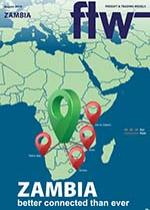Changes in the way mines are taxed and a clampdown on transfer pricing have seen the percentage that mining contributes to the Zambian gross domestic product increase from 0.1% of GDP in the early 2000s to around 11% today, according to the International Monetary Fund (IMF). This is the result of a number of stand-offs between the big mining and trading companies and the government. For the logistics sector there is a huge knock-on effect in the form of lower exports of copper and much-reduced volumes of mining chemicals and supplies on the return route. Everyone in the supply chain feels the pinch – from the woman selling mealies on the side of the road to the ports serving the Copperbelt. In 2012 the then newly elected government of former president Michael Sata imposed (and lifted two days later) a ban on metal exports. The 2019 budget introduced policy changes aiming at further increasing the mining sector’s contribution to budget revenues. Mineral royalty rates on copper were increased by 1.5% and the royalty rate on cobalt to 8% from 5%. Mineral royalties were also made non-deductible for income tax purposes. An import duty of 5% on copper and cobalt concentrate imports was levied to discourage processing of imported concentrates in favour of domestic ones. Instead of boosting local production this is seen to have contributed to the closure of two smelters which were processing concentrate from the Democratic Republic of Congo (DRC) – which in turn reduced volumes for hauliers carrying concentrate that the DRC does not have the capacity to process.
IMAGE with CAPTION


